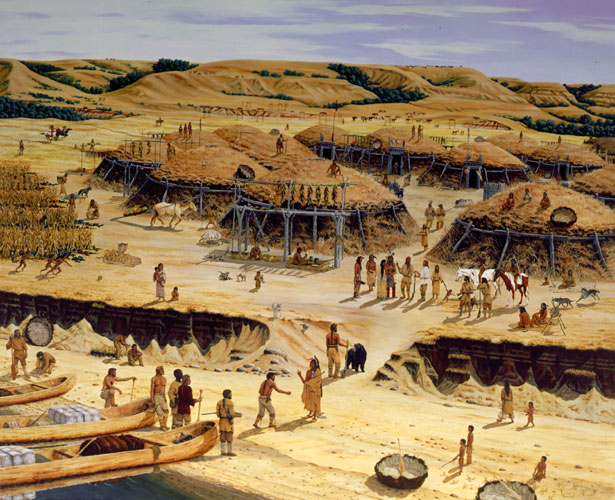Sakakawea’s services to the expedition were not confined to linguistic interpretations and diplomacy. She gathered and dug for prairie edibles that may have supplemented the expedition’s largely meat diet. She did not, as legend has it, guide Lewis and Clark to the Pacific, but she did confirm some of their geographical decisions, particularly when they approached the landscape of her childhood; and on the return journey in 1806 she advised William Clark to cross into the Yellowstone watershed by way of what later became known as Bozeman Pass. In gratitude, on July 13, 1806, William Clark spoke of her as “the Indian woman who has been of great Service to me as a pilot through this Country.”
Sakakawea seems also to have played a significant symbolic role on behalf of the expedition. On more than one occasion Clark noted that Sakakawea’s presence – with an infant in tow – disarmed potential hostility among Indians who were alarmed by the sudden visitation of more than thirty heavily armed strangers. “the sight of This Indian woman, wife to one of our interprs, confirmed those people of our friendly intentions, as no woman ever accompanies a war party of Indians in the quarter,” Clark wrote on October 19, 1805. And it is possible that Sakakawea inspired some civility, perhaps even domesticity, among an overwhelmingly masculine troupe. She was, after all, the only woman with thirty-one highly active young men between the ages of eighteen and thirty-five.




